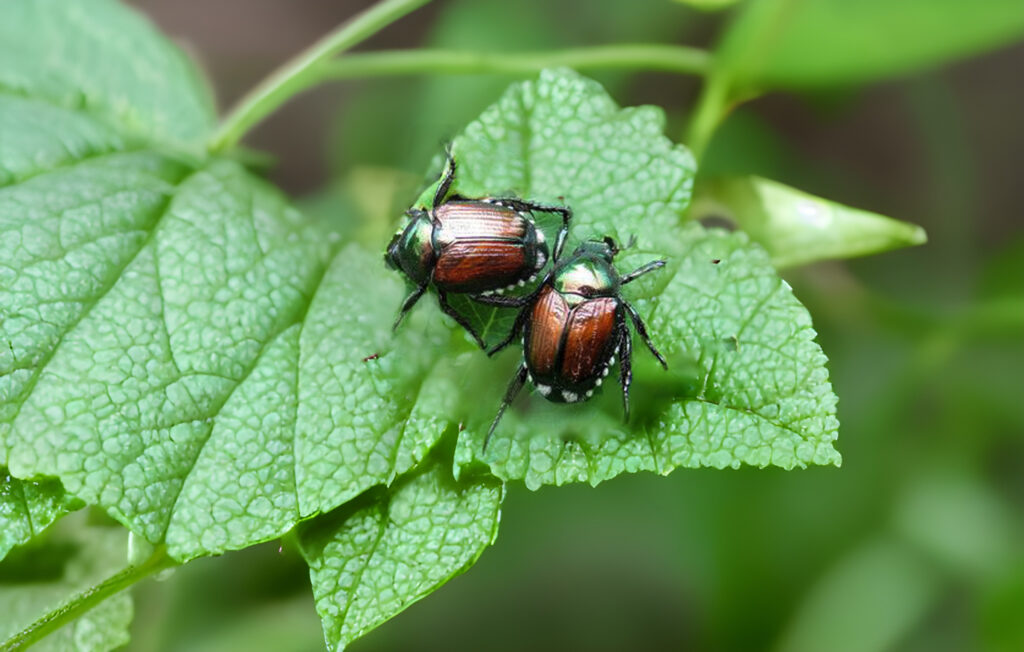Are you tired of dealing with persistent garden pests? If so, you’re probably wondering “How to Get Rid of Japanese Beetles” effectively. These invasive insects can wreak havoc on your beautiful plants and flowers, leaving you frustrated and searching for a solution.
This comprehensive guide is here to help you understand the best methods for eliminating these destructive pests from your garden or home. With our top 10 proven strategies, you can finally take control and maintain a healthy, Japanese beetle-free environment. Read on to discover the most effective ways to combat these voracious insects and restore the beauty of your outdoor space.

Table of Contents
Natural Solutions to Eliminate Japanese Beetles
Natural solutions are an eco-friendly and effective approach when considering how to get rid of Japanese beetles in your garden or home. These methods, which include hand-picking and drowning, neem oil application, and introducing beneficial insects, allow you to manage the beetle population without resorting to harmful chemicals.
By employing these techniques, you can maintain a balanced ecosystem in your garden, ensuring that both your plants and the environment remain healthy. Discovering how to get rid of Japanese beetles using natural solutions is an excellent way to protect your plants while also promoting sustainability and environmental responsibility.
1. Hand-picking and drowning
One of the simplest ways to eliminate Japanese beetles is by hand-picking them from your plants. Fill a bucket with soapy water and carefully remove the beetles from the affected areas. Drop them into the bucket to drown them. This method may be time-consuming, but it’s a chemical-free approach to controlling the beetle population in your garden.
2. Neem oil
Neem oil is a natural insecticide that can deter and kill Japanese beetles. Mix neem oil with water and a few drops of liquid soap, then spray it on your plants to create a protective barrier. This method not only helps control the beetle population but also prevents them from laying eggs on your plants.
3. Beneficial insects
Introducing beneficial insects like ladybugs and parasitic wasps to your garden can help control Japanese beetles. These insects are natural predators of the beetles and their larvae, keeping their numbers in check.
4. Diatomaceous earth
Diatomaceous earth is a natural powder made from fossilized algae. Sprinkle it around the base of your plants to deter and kill Japanese beetles. It works by damaging the insects’ exoskeletons, causing them to dehydrate and die.
5. Pheromone traps
Pheromone traps are designed to attract and capture Japanese beetles. Place them strategically around your garden to help reduce the beetle population. However, be cautious when using these traps, as they can sometimes attract more beetles to the area.
6. Milky spore
Milky spore is a naturally occurring bacterium that infects and kills Japanese beetle grubs. Apply the milky spore powder to your lawn and garden to target the beetles at the larval stage, effectively reducing the overall population.
7. Nematodes
Beneficial nematodes are microscopic worms that attack and kill Japanese beetle grubs. They can be purchased online or at garden centers and can be applied to your lawn or garden to help control the beetle population.
8. Insecticidal soap
Insecticidal soap is a gentle and effective way to control Japanese beetles. Mix a solution of water and liquid soap, then spray it directly onto the beetles to kill them. This method is safe for your plants and beneficial insects.
9. Cultural control
Cultural control involves making your garden less appealing to Japanese beetles by removing their preferred host plants. Replace these plants with beetle-resistant varieties to help reduce the population and prevent future infestations.
10. Preventative measures
Preventing Japanese beetles from invading your garden in the first place is the best way to control them. Keep your garden clean and well-maintained, and consider using barriers like floating row covers to protect your plants.
Consistency and Monitoring in Japanese Beetle Control
Consistency and monitoring are essential components in learning how to get rid of Japanese beetles effectively. Implementing your chosen methods regularly will help maintain a beetle-free environment in your garden or home. It’s crucial to monitor your plants for signs of infestation and take prompt action if you spot any beetles.
The key to success lies in being proactive and persistent in your efforts to eliminate these pests. By staying committed to the process and regularly checking your plants, you’ll ensure a healthy, thriving garden that is free from the damage caused by Japanese beetles.
Combining Methods for Maximum Effectiveness
When it comes to learning how to get rid of Japanese beetles, combining various methods can lead to maximum effectiveness. By integrating natural solutions like neem oil and diatomaceous earth with traps, biological control, and cultural practices, you can create a comprehensive approach to tackle these pests.
This holistic strategy ensures that you address the beetle problem at different stages of their lifecycle, making it harder for them to thrive in your garden. Remember, consistency is key when combating Japanese beetles, so always monitor your plants and adjust your approach as needed to maintain a beetle-free environment.
In conclusion, dealing with Japanese beetles can be a challenge, but with the right combination of natural remedies, insecticides, traps, and prevention methods, you can successfully eliminate them from your garden or home. Don’t let these pests ruin your beautiful plants – take action today and enjoy a thriving, beetle-free garden!
Happy gardening!
